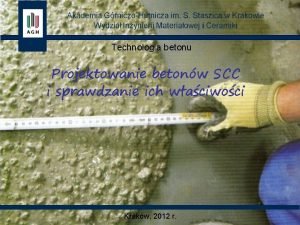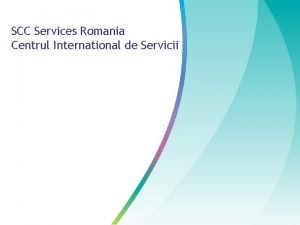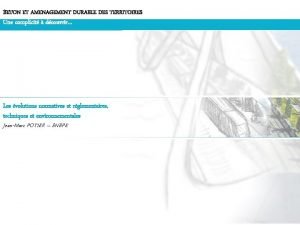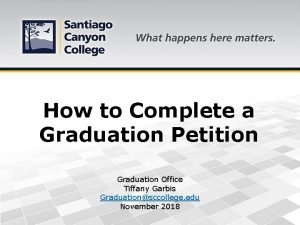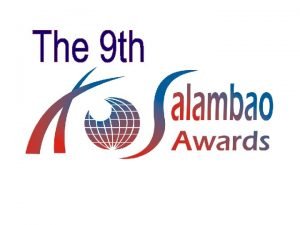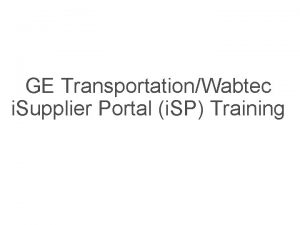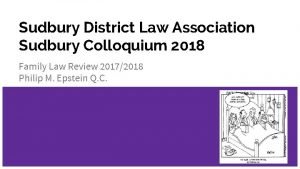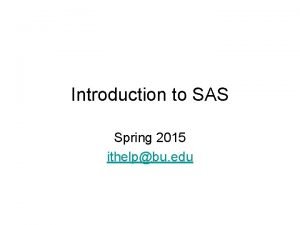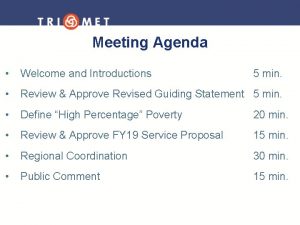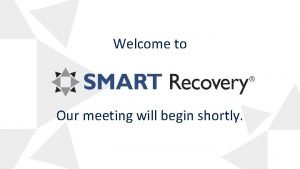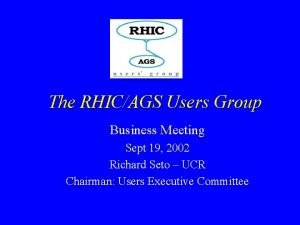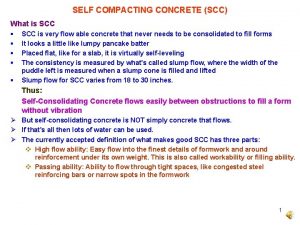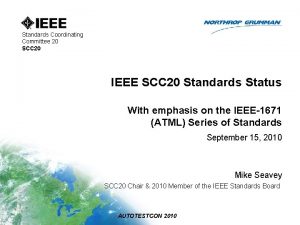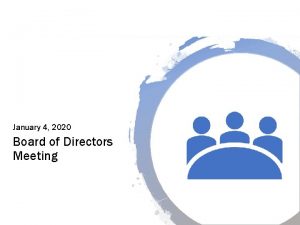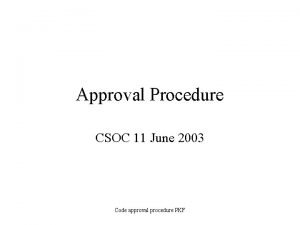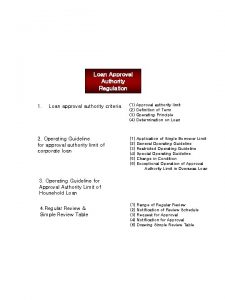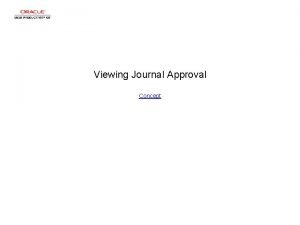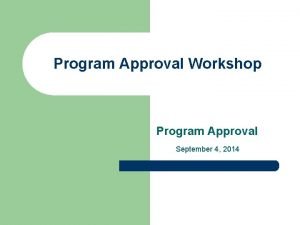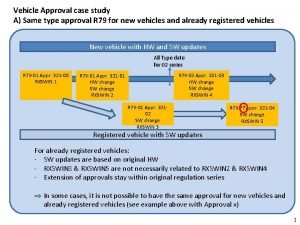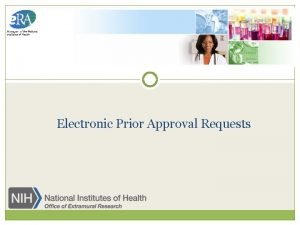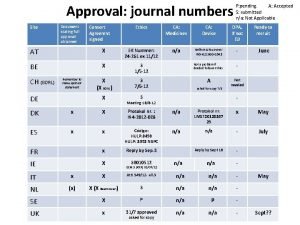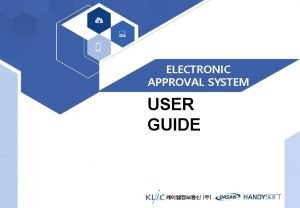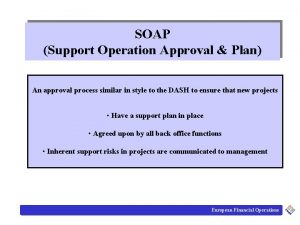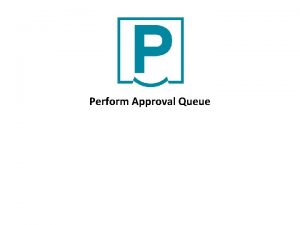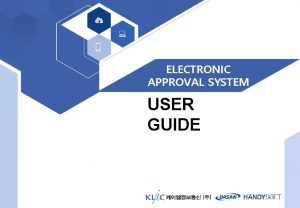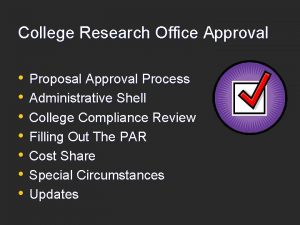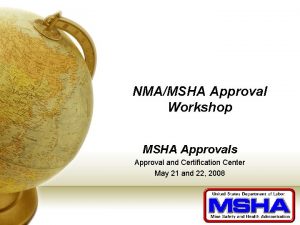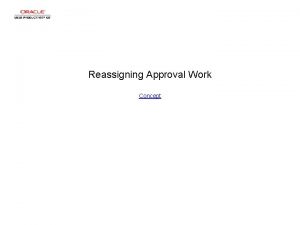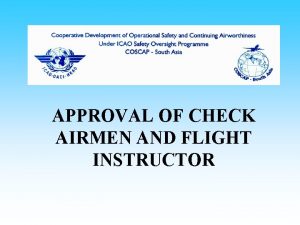SCC MEETING January 8 2020 WELCOME APPROVAL OF
































- Slides: 32

SCC MEETING January 8, 2020

WELCOME & APPROVAL OF NOVEMBER MINUTES • Heather White

COUNSELOR UPDATE • Megan Gebhard

CELL PHONE • Lunchtime – Jessica Miller • Survey Results – Mary Anderson • Policy: First Draft – Mary Anderson

LUNCHTIME – JESSICA MILLER

CELL PHONE SURVEYS Parent, Teacher, Student

#1 • What grade level is your student in? • What grade level do you teach? • What grade level are you in? Teachers = 53 Parents = 533 Students = 1425

#2 • My child has a SMART phone? • Which applies to you? (Core, elective, DLI) • I have a SMART phone? Teachers = 53 Parents = 533 Students = 1425

#3 • My student brings their phone with them to school? • Left blank • I bring my phone with me to school? Teachers = 53 Parents = 533 Students = 1425

#4 • I contact my student during school hours on their cell phone • Left blank • My parents contact me during school hours on my cell phone Teachers = 53 Parents = 533 Students = 1425

#5 • Student personal electronic devices and accessories should remain stored and out of sight unless directed by the individual teacher. • (This would include all cell phones, Apple watches, and Bluetooth ear buds. ) Teachers = 53 Parents = 533 Students = 1425

#6 • If directed by the classroom teacher, student’s may use cell phones for direct instruction and related activities. • (Example: Kahoot) Teachers = 53 Parents = 533 Students = 1425

#7 • If directed by the classroom teacher, students may use cell phones to enter due dates, assignments, and review schedules. (Example: digital calendar) Teachers = 53 Parents = 533 Students = 1425

#8 • If directed by the classroom teacher, student’s may use cell phones to listen to music during independent work time. Teachers = 53 Parents = 533 Students = 1425

#9 • When at school, cell phones may be used without restriction before and after school. Teachers = 53 Parents = 533 Students = 1425

#10 • When at school, cell phones may be used without restriction during lunch. Teachers = 53 Parents = 533 Students = 1425

#11 • When students do not have access to their phones during school hours, they are more engaged socially with their peers. Teachers = 53 Parents = 533 Students = 1425

#12 • When student’s do not have access to their phones during school hours, they are more engaged academically. Teachers = 53 Parents = 533 Students = 1425

#13 • Cell phones should be turned off and put away during class time. Teachers = 53 Parents = 533 Students = 1425

#14 • Bluetooth enabled ear buds should not be allowed in student’s ears during instructional time. Teachers = 53 Parents = 533 Students = 1425

#15 • I am concerned about the use of the camera functions due to privacy and safety issues. Teachers = 53 Parents = 533 Students = 1425

#16 • Repeated violations of a school cell phone policy should result in the confiscation of the student's phone. Teachers = 53 Parents = 533 Students = 1425

#17 • If you had your choice of school cell phone policy, which would you prefer. . . OPTIONS PARENT S TEACHER STUDENTS S a. I prefer there is no policy - in other words, students can use their cell phones as they see fit 0 % 27 % b. Cell phones can be used during passing time and lunch breaks. In class, phones can be used at teacher’s discretion. 41 % 48 % 55 % c. Cell phones can be used during passing time and lunch breaks. In class, phones are put away and kept away for the duration of class (such as in backpacks). 25 % 26 % 14 % d. Cell phones must remain in locker at all times during school hours (7: 30 23 % -2: 30) and used only in cases of emergency. 13 % 2 % f. Cell phones must remain in locker at all times during school hours (7: 30 - 11 % 2: 30) and be in off position. For emergencies, students will utilize school office telephones and personnel. 13 % 2 %

TAKE AWAY 5. Student personal electronic devices and accessories should remain stored and out of sight unless directed by the individual teacher. 93% parents agree, 96% of teachers agree, 52% of students agree. 9. When at school, cell phones may be used without restriction before and after school. 60% parents agree, 74% teachers agree, 92% of students agree 10. When at school, cell phones may be used without restriction during lunch. 52% parents agree, 60% teachers agree, 60% students agree. 13. Cell phones should be turned off and put away during class time. 90% parents agree, 85% teachers agree, 70 % of students agree. 14. Bluetooth enabled ear buds should not be allowed in student’s ears during instructional time. 96% parents agree, 100% teachers agree, 68% students agree. 16. Repeated violations of a school cell phone policy should result in the confiscation of the student's phone. 87% parents agree, 100% teachers agree, 53% students agree. 17. If you had your choice of school cell phone policy, which would you prefer. . . - Cell phones can be used during passing time and lunch breaks. In class, phones can be used at teacher’s discretion. 41% of parents, 48% of teachers, 55% of students.

DIRECTIVES TO DPMS FROM BOARD POLICY 500. 6 1. Each individual CSD school shall develop a school electronic device policy/procedure for students, employees, and guests, governing the use of electronic devices on school premises and at school sponsored activities. See, R 277 -495 -3(1). 2. The school electronic device policy/procedure will be developed with input from teachers, students, parents, employees, school community councils, and community members and will include permissible and restricted uses of electronic devices that promote classroom learning and minimize disruptions. 3. The school electronic device policy/procedure will be communicated to parent/legal guardians and students, and will be posted on the school’s website.

FIRST DRAFT OF DPMS CELL PHONE POLICY 1. Student personal electronic devices should remain stored, out of sight, and silenced during class time unless directed by the individual teacher. As a one-on-one technology school, teachers will provide access to school devices first and individual devices when it is beneficial for time. This includes smart watches. 2. When at school, cell phones may be used without restriction before and after school. DPMS students have COURAGE. When using cell phones at school, students should demonstrate understanding and empathy, respect and responsibility, and be accountable for time and place. 3. When at school, cell phones may be used during lunch unless otherwise specified by the administration. Students are more engaged socially with their peers by setting their cell phones aside and participating in face-to-face interactions and this is encouraged. 4. Headphones, including but not limited to Bluetooth enabled ear buds, are not permitted in students’ ears during class time. (What if a student is done with work, can they listen to music? ) 5. Using the camera feature in a restroom or locker room is prohibited and can be illegal. Students have a reasonable expectation of privacy at school, most particularly in locker rooms and bathrooms. More severe consequences will be enacted for violations of this privacy. Students should avoid taking pictures of others without their permission in any area. 6. With the explicit permission of the classroom teacher, students may listen to music during independent work time. If music is desirable during independent work time, teachers are encouraged to play music over the classroom audio system. (should sentence one be eliminated? ) Do #4 & 6 contradict each other?

FIRST DRAFT OF PROCEDURE FOR ELECTRONIC DEVICE POLICY INFRACTIONS WITHIN A SCHOOL YEAR. 1. Infractions of the DPMS cell phone policy will be dealt with in the following way: 1 st infraction – teacher tells the student to put their phone away 2 nd infraction – teacher tells the student to put their phone away or place it on the teachers desk for the remainder of the class period. 3 rd infraction – teacher confiscates the electronic devices and takes it to the hall monitor or the Administration. The phone is returned to the student at the end of the day. The incident is documented. 4 th infraction – teacher confiscates the electronic devices and takes it to the hall monitor or the Administration. The phone is returned to the student at the end of the day. The incident is documented. 5 th infraction – teacher confiscates the electronic devices and takes it to the Administration. Parents are called and requested to come to school to pick up the phone. The incident is documented. 6 th + infractions – teacher confiscates the electronic devices and takes it to the Administration. Parents are called and requested to come to school to pick up the phone. A lunch detention is assigned. The incident is documented.

SNAP PLAN APPROVAL • Randall Seltz

COMMUNITY FEEDBACK • This was mentioned in the November meeting. Was this the feedback on the cell phone survey and/or the top 3 -5 climate concerns?

TOP 4 CLIMATE CONCERNS 1. Addressing Digital Citizenship- such as cyber-bullying, improper use of cell phones (302 parents) 2. Adjusting school start time - starting school later (246 parents) 3. Fostering an environment of inclusivity (213 parents) 4. Single Entry Point- all visitors entering through the front (138 parents)

BOARD UPDATE

NEXT MONTH FEB. 12 T H • Items to be discussed Honors ELA & Math – 6 th grade Landtrust/TSSP Electronic Device Policy Discuss top 4 climate concerns
 Proporcje betonu
Proporcje betonu Scc supply chain
Scc supply chain Scc romania
Scc romania Well proximity effect in layout
Well proximity effect in layout Kosaraju's algorithm
Kosaraju's algorithm Beton scc adalah
Beton scc adalah Aménagement des territoires et produits béton
Aménagement des territoires et produits béton šcc gimnazija lava
šcc gimnazija lava Graduation petition
Graduation petition What is salambao
What is salambao Quite to graphics program
Quite to graphics program Southampton city council procurement
Southampton city council procurement Bus access module for scc
Bus access module for scc Ge supplier connect
Ge supplier connect Riverbed scc 1000
Riverbed scc 1000 Sudbury colloquium
Sudbury colloquium Sas tutors
Sas tutors Canvas los rios scc
Canvas los rios scc For today's meeting
For today's meeting Meeting objective
Meeting objective What is meeting and types of meeting
What is meeting and types of meeting What is meeting and types of meeting
What is meeting and types of meeting Agenda welcome and introductions
Agenda welcome and introductions Welcome to our first meeting
Welcome to our first meeting Agenda welcome and introductions
Agenda welcome and introductions Agenda welcome and introductions
Agenda welcome and introductions Habr
Habr Meeting will begin shortly
Meeting will begin shortly Meeting agenda welcome and introductions
Meeting agenda welcome and introductions Welcome to our meeting
Welcome to our meeting American psychiatric association annual meeting 2020
American psychiatric association annual meeting 2020 World team herbalife salary
World team herbalife salary Rhic ags users meeting 2020
Rhic ags users meeting 2020
